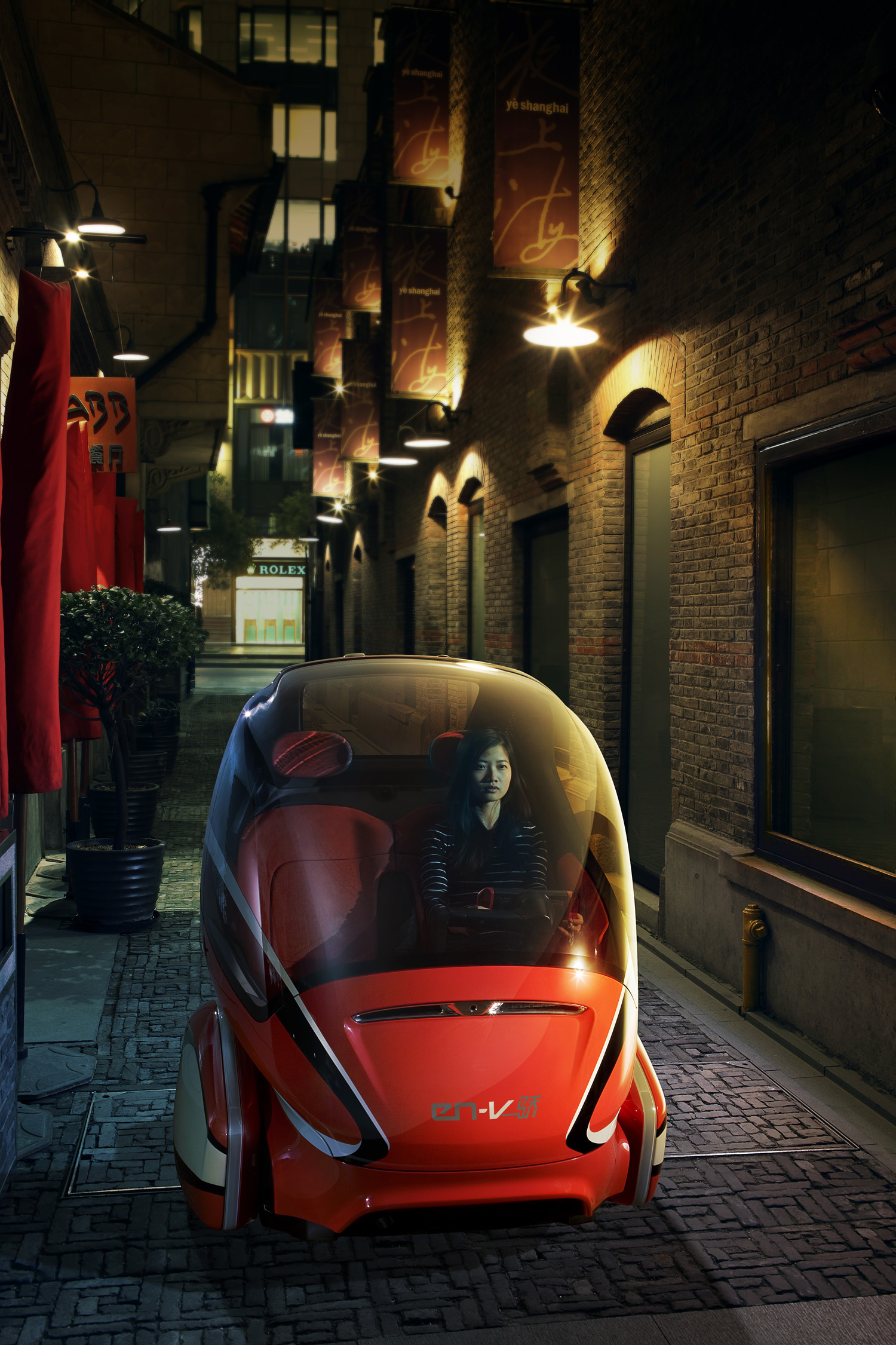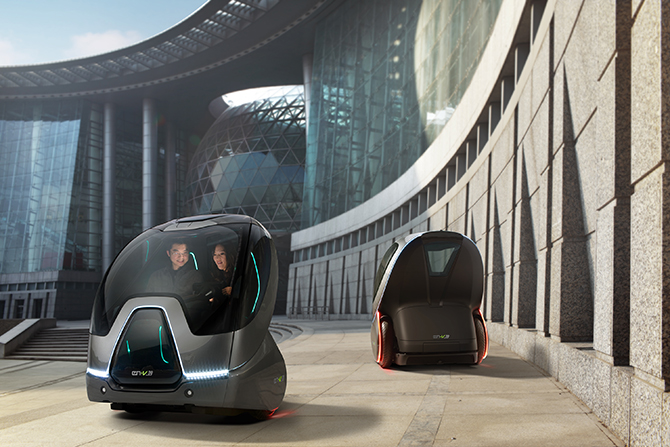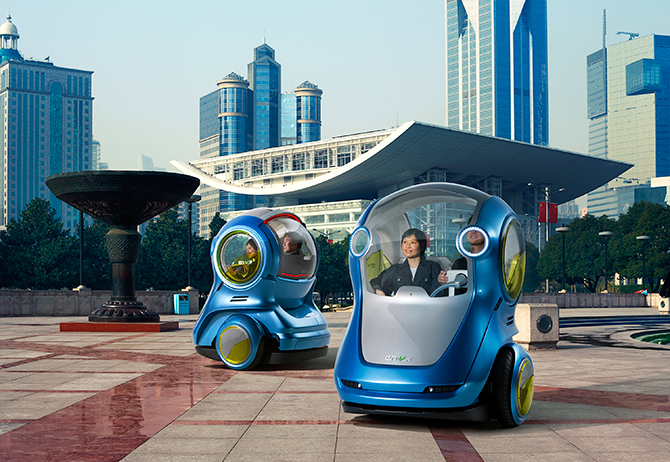Yes We Can (rid ourselves of oil addiction)! Info. graphic shows the math & the transition path
(Source: Free Insurance Quotes.org)
Can the U.S. replace 100 percent of its gas consumption with electricity? By this math, yes, we can:

(Source: Free Insurance Quotes.org)
Can the U.S. replace 100 percent of its gas consumption with electricity? By this math, yes, we can:
Pretty much every nation with a developed economy is preparing to transition out of the petro-based transportation into something clean (?), lean and green..
The Chinese government has said repeatedly that it intends the country to become the world leader in development, production and use of electric cars and other alternative energy vehicles.
Now comes a report that it is preparing to put its money behind that promise. The Shanghai Securities News says China’s Ministry of Industry and Information Technology has prepared a new 10-year plan, slated for approval by the State Council later this month, that sets aside 100 billion yuan (U.S. $14,7 billion) for development and adoption of alternative energy vehicles.
The unattributed news report says that China hopes to produce 500,000 alt-energy vehicles annually starting in 2011.
Analysts at IHS Global Insight say this proposed expenditure is in addition to about $3 billion in already-approved hybrid and plug-in electric vehicle subsidies for private and commercial purchases and that China also is increasing its focus on development of a national EV charging network.
(Source: via Transportation Research Board Weekly E-Newsletter)
The National Renewable Energy Laboratory has released a report that explores the components of plug-in electric vehicle infrastructure, challenges and opportunities related to the design and deployment of the infrastructure, and the potential benefits.
All controversies aside, Elon knows how to make loads of money and mastered the art of having a ton of fun while raking cash.. Colbert, one of the best modern day comedic talk show host, gets to grill Musk..The result is captured in the video below..
Elon Musk, co-founder of PayPal, SpaceX, and electric car company Tesla Motors, sat down with Colbert Report host Stephen Colbert to talk about his latest venture, SpaceX.
Colbert listed Musk’s many accomplishments, then asked him: “Where do you find time for your secret identity as Batman? Because you’re either a superhero or a supervillain.”
“I’m mostly an engineer,” Musk said. “Oh yeah, engineer,” Colbert scoffed. “Bruce Wayne’s a banker.”
Colbert told Musk later, “You’re the future, man.”
Musk told Colbert that he hopes SpaceX, which successfully launched the Falcon 9 rocket into orbit this past June, will be ready in the next few years to take NASA astronauts into space.
(Sources: Wired; RTTNews, Associated Press, The Detroit News GM Press Release)

Image Courtesy: GM
General Motors always dreams big, no matter how much money they have in their bank account. Now that Uncle Sam’s treasury is backing up the financial future, GM continues its tradition of dreaming big and the latest outcome of this is a future where people navigate crowded cities in big Segways that look kinda like a Dyson vacuum cleaner and can drive you home when you’ve had one too many after a long day at work. . Seriously.
Today, GM unveiled a trio of electric “urban mobility vehicles,” built with help from the über-geeks at Segway, today in Shanghai. They’re called Electric Networked Vehicles (EN-V) and they’re designed for cities bursting at the seams with traffic. The EN-V, pronounced “envy,” is GM’s latest effort to burnish its credentials as a future-focused, environmentally friendly company and shed its image as the bastion of the gas guzzling Hummer. The automaker is in the process of winding down Hummer after a deal collapsed to sell it to a Chinese heavy equipment maker. The helmet-shaped two-seater vehicles unveiled today in Shanghai will be now showcased at world expo 2010 to be held in Shanghai starting May 1 through October 31. The pavilion will be shared by GM with its Chinese partner SAIC Motor Corp. There will be three models on display in Shanghai:
unveiled today in Shanghai will be now showcased at world expo 2010 to be held in Shanghai starting May 1 through October 31. The pavilion will be shared by GM with its Chinese partner SAIC Motor Corp. There will be three models on display in Shanghai:
Shanghai is the perfect place to show the funky runabouts because China is the largest automobile market on the planet. A lot of thought is going into figuring out how all those people buying all those cars will get around. Sixty percent of the world’s population will live in urban areas by 2030 and there will be 2 billion cars on the road. Automakers are looking for ways to build cars that pollute less and take up less space.
Here are some interesting nuggets gleaned from the above sources:

Click here for some interesting pictures and a detailed scoop. If you are interested in reading more about the concept and have the time to enjoy some cool videos that demonstrate the technology and vision, click here.
(Source: Washington Post)
It was dark and rainy, and the battery on his nifty Mini E electric car was almost gone.
Paul Heitmann rolled quietly through the suburban New Jersey gloom, peering through the rain on the windshield, not sure what he was looking for, anxiety turning into panic. He needed juice. He spotted a Lukoil gas station, which was closed, and beside the point, anyway. But beyond the pumps, there was a Coke machine, and it was lit up.
“I thought ‘Finally!’ because I knew if there was light, there would be electricity,” he said. “I managed to find the outlet behind the Coke machine and plugged in.”
As many of the auto companies tell it, next year may be the year that the massive U.S. auto industry really begins to go electric.
The all-battery Leaf from Nissan is scheduled to go on sale in November. General Motors will begin selling the Chevy Volt, a primarily electric car (with a small auxiliary gasoline engine that kicks in to boost the car’s range). Ford has plans to produce an electric commercial van. The Obama administration has doled out $2.4 billion to companies involved in producing batteries and other parts of electric cars.
“We have to get on with the electrification of our industry,” William Clay Ford Jr., chairman of Ford, said during a visit to Washington on Monday.
“I know we have to have an electric car,” GM Chairman Edward E. Whitacre Jr. told reporters last week.
But overshadowing prospects for the transition of the vast U.S. auto fleet to electric — and the billions of dollars the automakers have invested in the switch — is the question of whether anyone beyond a sliver of enthusiasts will soon embrace the newfangled cars, which force drivers to rethink their habits and expectations of convenience.
Click here to read the entire article.
(Source: Autoblog)
Earlier this week, Brammo’s director of product development Brian Wismann along with Dave Schiff of Crispin Porter Bugosky, began a ten-day journey meant to take them from Ann Arbor, Michigan to Washington, DC. The 520 mile trip, which is being chronicled on the site shockingbarack.com, is intended to raise awareness of the company’s new electric motorcycle, the Enertia, and electric vehicles in general.
The trek began at Zingerman’s deli in downtown Ann Arbor, MI, which just happens to be a a few blocks from this blogger’s office. Brian and Dave swung by the office for a visit to show off the bike – which they prefer to call a powercycle – and chat about what it can do. Along the route to the capital, they’ll be making plenty of similar stops, partly to demonstrate the bike but mostly out of necessity. While the Enertia is undoubtedly a neat ride, it underscores two of the major problems with EVs. They are expensive ($11,995 for the Enertia) and have limited range. This bike only has a 42-mile range and then takes four hours to charge. That means plenty of short hops to cover the 520-mile distance to DC.
The Brammo team has built a nice website that has a plenty of brilliant ideas to get the community involved (not just transportation geeks and gear heads with greasy finger nails). Here are some ways you can help the Brammo team achieve their goals:
So, are you ready ShockBarack (Oh man, won’t the republicans would die for that chance?)? If yes, just visit the team’s website to follow their progress. As we speak, the Google Map shows they are somewhere near Aurora, OH. The team’s video logs of the journey are quite interesting and it is nice to see what all they endure as they make their way to Washington, DC battling some really nasty weather. At least they will have a great story to tell their grand children someday, if not to Barack.
NOTE: Guys, Transportgooru would love to have a cup of coffee with you when you arrive here in DC . That is what you will be craving for before you even shake hands with Barack after driving in this damp & cold miserable weather (Tweet me @transportgooru).
(Source: Green Car Congress)
Researchers from the US Department of Energy’s (DOE) National Renewable Energy Laboratory (NREL), Idaho National Laboratory (INL) and Argonne National Laboratory (ANL) are cooperating to develop and test a method for predicting the real-world fuel and electricity consumption of plug-in hybrid electric vehicles (PHEVs) by adjusting dynamometer test results. After examining data on the only PHEV currently available in large numbers, the new adjustment method shows promise for reasonably predicting PHEV average fuel and electricity use, despite differences in design.
Current rules for conventional vehicles do not work for plug-in hybrids because the vehicles run on both electricity and gasoline; industry debate centers on the rules for estimating miles per gallon. This was highlighted by the reaction to GM’s announcement that the Chevy Volt would attain 230 mpg in the city cycle, given a single charge per day, along with combined cycle electricity consumption of 25 kWh/100 miles, based on a draft EPA methodology. (Earlier post.)
PHEV testing is further complicated by the fact that these vehicles operate in two different modes based on the distance they are driven (initially depleting energy from the large vehicle battery, and eventually sustaining the battery charge for longer distance driving). Consensus is building on techniques to handle these first two complications, but one question that remains is how to adjust raw certification cycle test results to best predict a PHEV’s average real-world energy use.
Click here to read the entire article.
(Source: Time)
Q’Orianka Kilcher has never pumped a gallon of gasoline into her car. Never. Then again, she’s never owned a car that needed gasoline. You could say she is at ground zero of the ZE, or zero-emission, vehicle future.
A 19-year-old actress living in Santa Monica, Calif. (she played Pocahontas in the 2005 movie The New World), Q’Orianka (pronounced Quor-ee-anka) is on her second hydrogen-fuel-cell car, a Honda FCX Clarity, a four-door with a 200-mile range. “I don’t think I will ever buy a gas car,” she says. “I can go everywhere I want to go with this. Plus, it’s a guy magnet.”
Auto-marketing gurus take note: the brave new world of ZE cars is here, ready or not, and please make them sexy.
“ZEs are an entirely different paradigm,” says Stephen Ellis, manager of fuel-cell-vehicle marketing for American Honda Motor Co. in Torrance, Calif. Ellis manages the rare $600-a-month leases (including free hydrogen fill-ups) for the FCX Clarity. “Knowing how to integrate these new technologies into existing lifestyles and then building new infrastructures to make it work is the trick,” says Ellis. “It took a hundred years to create the gasoline infrastructure; this will be much faster.”
There are three types of zero, or near zero, emission cars: electric plug-ins, hybrid plug-ins and hydrogen fuel cells (which create power by having oxygen and hydrogen pass over electricity-generating electrodes). But each major automaker has its own take on which advanced technology will win 10 years down the road.
Nissan, for example, is pedal-to-the-metal with pure electric cars, having skipped fuel-cell technology altogether. It considers “interim hybrid technology,” like Toyota’s successful Prius, a mere passing phase. “The market-share winner will be the one that offers affordable, mass-market, zero-emission vehicles with a zero payback period for premium technologies,” says Mark Perry, director of the product planning and strategy group for Nissan North America.
In contrast to Nissan, Honda has passed up pure electrics, preferring instead to bank on lower-cost hybrids (Civic and Insight) and hydrogen fuel cells. Ellis, however, claims no distinction should be made between “FCs” and electrics, since a fuel-cell car is basically an electric car powered by hydrogen-created electricity.
Then there is Toyota, the 800-pound hybrid gorilla. Toyota has yet a third route to success: muscling up on its hybrid strength.
“We believe in not being first to market but being best to market,” says Mary Nickerson, who is in charge of advanced-vehicle marketing at Toyota Motor Sales, also in Torrance. Last year, Toyota reached the 1 million sales mark with its Prius hybrid (gas-powered with fuel-saving electric technology).
“Our strategy is to be the hybrid masters, no pure electrics, and to explore fuel-cell technology,” says Nickerson. “We feel it’s going to take a lot more than one technology to make this new market work.”
Some 21% of consumers will not consider a pure electric car because of the need to plug-in at home, according Nickerson. “We believe that 10 years out, the winners will be all new technologies, but hybrids will be the largest winner of them all.”
Then again, as Honda’s Ellis says, “It all depends on the price of gas.”
Click here to read the entire article.
(Sources: Seattle PI via Autobloggreen)
With more and more electric car makers ready to blitz the market with Plug-in Hybrids Electric Vehicles and Plug-In Electric Vehicles, it is time the local communities took a stock of the supporting infrastructure necessary for feed these voltage-hungry vehicles. The Seattle PI takes a look at the readiness of Seattle to handle the surge of electric vehicle. Here are some interesting excerpts from the article:
Is Seattle charged for electric cars? Local electric car boosters think so, event though electric cars — other than such hybrids as the Prius — have not captured the fancies of more than a few people in the past 20 years.
“There’s a perfect storm this time around,” said Steve Lough, president of the Seattle chapter of the Electric Vehicle Association, who drives a 2000 Honda insight gas-and-electric hybrid.
On Aug. 5, the federal government announced that it will provide almost $100 million to install roughly 2,500 electric vehicle chargers each in the greater metropolitan areas of Seattle, Phoenix, Nashville, Portland and San Diego.
Roughly $20 million will go to Seattle for 2,550 chargers, Read said.
About 40 firms, including Nissan and eTec, will match the federal appropriations. Local governments will not be required to provide matching money, Read said.
This experiment is timed with Nissan’s planning to sell a new electric car — the “LEAF” — in late 2010. It hopes to initially sell 5,000 cars evenly split among the five metro areas.
This timing roughly coincides with General Motors’ plans to put possibly 10,000 of its all-electric “Volt” cars on the market in late 2010.
By comparison, Seattle has the nation’s largest chapter of the Electric Vehicle Association — with 230 members.
Local owners said recharging electric cars lead to different habits from refueling conventional vehicles.
“You basically plug it in whenever you park it,” said Dan Davids, owner of a 2002 Toyota RAV4-EV and president of the nationwide Plug-In America organization.
Fulling charging a car with a conventional 220-volt installation could take four to eight hours. So-called “fast” chargers with extra oomph could take 15 to 30 minutes to do the same.
But local electric car owners said those figures are misleading.
These cars rarely need full charges with the accompanying long repowering times, they said.
Electric cars are usually charged nightly at their homes. If recharged at business locations, the new power mostly “tops off” a battery usually containing most of its original charge, they said. The same “topping off” would occur when cars would be recharged at businesses.
Between the small amounts of electricity and the lack of wear-and-tear on moving engine parts, they estimated it costs about 2 cents a mile to operate their vehicles.
The three are optimistic that a major hurdle to owning electric cars could be finally conquered — the initial price tag. The Tesla Roadster — with about 700 sold so far — goes for $109,000. Many models of electric cars have been in the $50,000 to $100,000-plus range. “You’re financing the research and development for the next generation of technology,” Morrison said.
The Volt’s expected price tag is about $40,000 with a federal tax credit of $7,500 earmarked for early buyers. The same tax credits will go to buyers of the first LEAFs, which are expected to go for $25,000 to $33,000.
Click here to read the entire article.